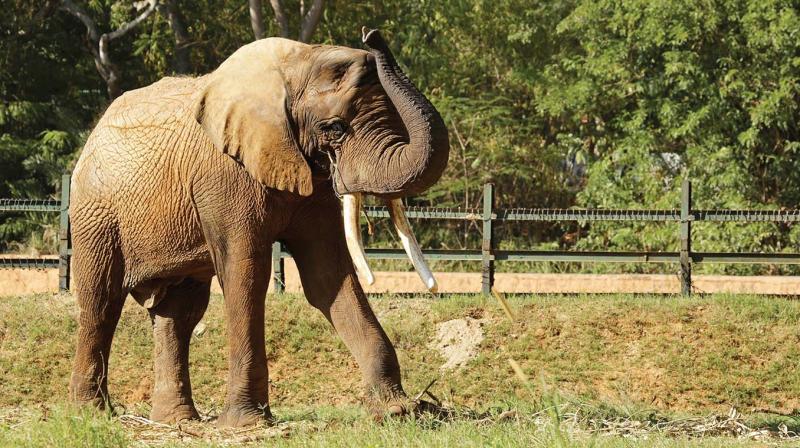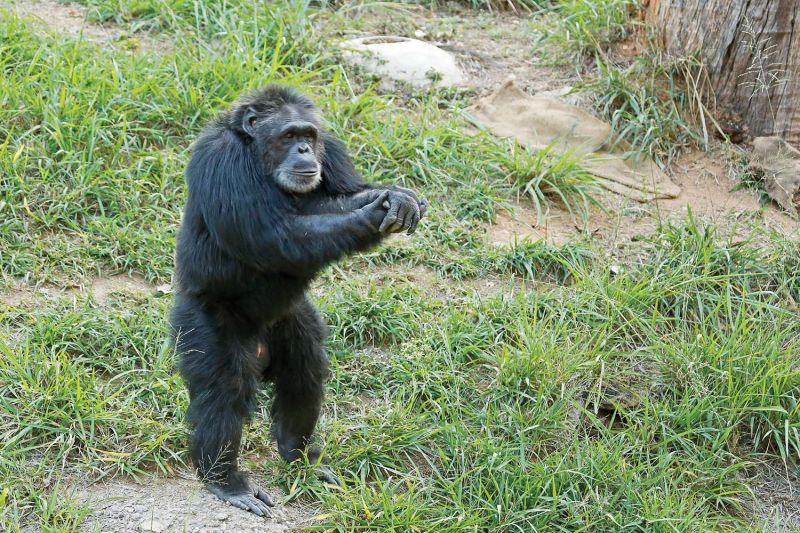At 125, Mysuru zoo gives you a royal treat
It now sprawls across 78 acres and is home to many exotic species from 50 countries.

The famed Mysuru Zoo is one of the oldest and largest zoos in the country. What was a palace zoo on 10.9 acres of land in 1892, it now sprawls across 78 acres and is home to many exotic species from 50 countries. On the zoo’s 125th aniversary, Shilpa P. throws light on its glorious past
They may be relics today, but they speak of life as it used to be when maharajas ruled their own little kingdoms across India. Visit any of the palaces still dotting the country and you are bound to come across paintings of kings with their prized hunting trophies. Not all maharajas took pride in hunting, some had an abiding love for wildlife. And luckily for Mysuru, this has given it one of its most treasured landmarks, Sri Chamarajendra Zoological Gardens, or the Mysuru Zoo as it is more popularly known.
Now celebrating its 125th anniversary, it has come a long way from its beginnings as a palace zoo spread over 10.9 acres in 1892 as it today sprawls across 78 acres that are home to 1,521 animals of 153 species from 50 countries, making it one of the oldest and largest zoos in India.
It was Sri Chamarajendra Wodeyar Bahadur, the 23rd ruler of the Yadu dynasty, anointed Maharaja of Mysuru in 1881 at the tender age of 18, who established the zoo in 1892. Renamed after its founder in 1909, the zoo has his bust on display at its entrance even today.
“Members of the royal family of Mysuru were great animal lovers. While they hunted animals as you can see in the trophy room of the palace, they also cared for them. In fact, the late Srikantadatta Narasimharaja Wadiyar had camels, elephants, horses, dogs and cattle in the palace court yards,” recall palace insiders.
Thanks to the farsightedness of the royal family of Mysuru, and its meticulous planning, the zoo has evolved into a model for not only other zoos in India, but also abroad. Interestingly, it was one of the first zoos in the world to do a successful caesarean on an elephant, according to sources and was designed not just to entertain tourists, but also educate people on wildlife, create awareness on conservation, and breed rare species in captivity
It had a good start as experts like Mr G H Krumbeigal, a German landscaper who was the architect of the Brindavan Garden near Mysuru and the Cubbon Park in Bengaluru were engaged to design its attractive landscape, recreating their natural habitat for the different species in its grounds.
While the maharajas had appointed an Australian named Mr Huge as superintendent of the zoo, after Independence its administrative control was transferred to the state’s horticulture wing in 1948. And in 1979 after the forest department took over, the Zoo Authority of Karnataka was created to run it.
As a royal hobby maharajas of the past, who visited European countries and Africa, brought home interesting animals such as chimpanzees, giraffes , antelopes, primates, birds and bears for the zoo. One of the important dealers they were in contact with was Mr Herman Ruhe, a German who owned several zoos in his country.
But today, the zoo gets its animals under exchange programmes from other zoos in Singapore, Sri Lanka, Israel and even Japan. Only recently, to mark its 125th anniversary, it got a lion, Shaurya from the Pradhyuman zoo in Rajkot.
Not stopping there , it plans to add three male and three female anacondas from a Sri Lankan zoo, two rhinoceros, a male and a female, from a Singapore zoo, a Himalyan bear from Shillong, Meghalaya, two otters, a male and a female, from the Sarthana national park in Surat, and a chimapanzee from the Nandankanan zoo in Bhubaneshwar, Odisha. It has also set its sights on orangutans.
 The zoo had a good start as experts such as G.H. Krumbeigal, a German landscaper, who was the architect of the Brindavan Gardens near Mysuru and the Cubbon Park in Bengaluru, were engaged to work on its landscape and recreate a natural habitat for various animal species.
The zoo had a good start as experts such as G.H. Krumbeigal, a German landscaper, who was the architect of the Brindavan Gardens near Mysuru and the Cubbon Park in Bengaluru, were engaged to work on its landscape and recreate a natural habitat for various animal species.
Having entered the 21st century its outlook is getting more modern and humane as its master plan 2032 has proposed doing away with barred and fenced enclosures and instead provide moated enclosures with lots of greenery for the animals in its care. It also plans to open its Koorgalli Rescue and Rehabilitation Centre to the public with a night safari thrown in for their enjoyment, according to zoo executive director, Kamala K.
The entrance to the zoo is being made more attractive with lights, and it hopes to add an amphitheatre, an interpretative centre and a multi- storied parking lot to its facilities. A 25- minute documentary has been shot by Mr Shekar Dattari in English and Kannada and its security could see a leg up with the addition of 10 to 15 CCTV wi-fi cameras, going by zoo authorities.
Home to Californian sea lions, the American bison, Secretary Bird, a polar bear, penguin, kangaroos and even a white elephant in the past, the zoo presently has tigers, leopards, lions, jaguar, cheetahs, besides a jungle cat, a leopard cat and, the small Indian civet. The around 30 lakh visitors, who flock to it annually, also get to see Asiatic and African elephants, rhinocerous, hippopotamus, gaur, and aquatic birds, besides chimpanzees, gorillas, the lion tailed macaque, a baboon, brown lemur, ring tailed lemur and the Nilgiri langur. Flightless birds like the ostrich, rhea, cassowary and emu and reptiles like the anaconda, king cobra, Indian cobra, seven types of crocodiles and iguana are also provided shelter in its sprawling grounds.
Bird lovers have a treat at the Karanaji lake spread over 90 acres on its campus as rare birds from foreign countries visit it regularly. Besides a children’s park the lake has a boating facility for tourists. But not forgetting its goals, the zoo is encouraging research by funding Veterinary University scientists and has established a laboratory for preparation of food with the financial assistance of the Central Zoo Authority. It has also ventured into production of vermi compost from animal waste and dried and fallen leaves.

